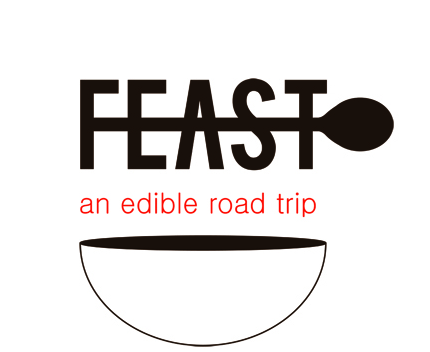Acadian Sturgeon & Caviar
In Saskatchewan we met Dr. Strawberry, and in New Brunswick we happened upon another unique expert: Dr. Sturgeon. Dr. Cornel Ceapa holds one of the world’s only PhD’s in sturgeon biology and fisheries engineering, and through his company, Acadian Sturgeon and Caviar in Carters Point, NB, he and his family are developing a sustainable aquaculture system for Atlantic sturgeon.
Sturgeons are one of the oldest known species of fish. They spawn and spend their youth in brackish waters, then migrate to the ocean for much of their adult life. They typically grow between 6-8 feet (though fish as long as 15 feet have been discovered), weigh around 300 pounds, and live an average of 60 years. Historically, sturgeon caviar (roe or fish eggs) has been highly sought after for its taste, nutrition, and abundance—the eggs make up about 5% of the body weight of a fertilized female, as many as 15 pounds from a single fish.
Around the world, over-fishing of sturgeon has depleted several stocks, and many sturgeon species are now considered endangered (Beluga sturgeon from the Caspian Sea, for example).
Scientists are looking for solutions, and I guarantee you will not find a man more enthusiastic about these archaic fish than Dr. Cornel Ceapa. Originally from Romania, but now working in New Brunswick, he is patiently implementing a business model that prioritizes the sustained presence of the wild populations over profits.
Ceapa currently processes wild sturgeon for his products while he develops the aquaculture. The Atlantic sturgeons are fished from a small local fishery with strict adherence to the sustainable quotas and are caught without any by-catch. They tag fish daily, carefully monitoring the length, weight, and population size.
To some, Aquaculture can be a dirty word. The practice has been around for hundreds of years, but in the last 30 years aquaculture has become more prominent, and is now responsible for about half of the seafood we consume. In many cases, however, it ends up being more destructive and dangerous to the wild populations it seeks to save. A concise breakdown of the difficulties associated with aquaculture can be found here.
I’ve come to view aquaculture in a similar way to agriculture. There are many practices under the umbrella of ‘agriculture,’ ranging from the destructive to the advantageous, and it’s similar with aquaculture. When carried out properly, it can be a viable part of the solution to our growing population, and the increasing pressure on our ocean’s resources.
Ceapa’s aquaculture is a pre-emptive effort, since the sturgeon population in the Saint John River is stable. Often, aquaculture is implemented once stocks are already depleted or nearly extinct. Having a healthy supply of wild fish has enabled Ceapa to grow his business, build a market for sturgeon meat and caviar, and provide the necessary finances while the specialized aquaculture is being developed.
The fish are raised on land, in containers, using a flow-through method. This ensures the sturgeon are constantly in fresh and moving water. The water is properly treated before being returned the river. His system will take about ten years to fully implement.
Ceapa ascribes to a nose-to-tail policy when it comes to processing sturgeon, and, considering the heft of a typical fish, there is a LOT of meat to process and sell.
Through education, he’s committed to making the ‘unpopular bits’ valuable again, just as the use of animal offal has experienced a renaissance in the culinary world. Dr. Ceapa has developed products and found uses for all parts of the sturgeon, including fillets and loins, fins and skins, and even the offal and gonads.
After our tour, we sat down to a lunch of Canadian sparkling wine, smoked sturgeon, and pate.
We ate caviar in the traditional way – off the back of our hands so only one spoon was necessary – with slices of buttered toast. This was my first caviar experience, and it was a rich, salty, complex in flavour, and made all the more enjoyable by the accompanying bubbles.
I was also impressed by the flavour of the smoked sturgeon, the flesh of which was dense and meaty, with ribbons of beautiful yellow fat.
Caviar, once an unsustainable European luxury food, can now be purchased from a Canadian small business that conscientiously manages Atlantic stocks. Furthermore, you can be sure the fish was not killed only for her eggs, but for the hundreds of pounds of flavourful meat and organs clinging to her spiky, prehistoric bones. Win, win, and win.
Thank you to Dr. Cornel Ceapa for giving us a new understanding of sustainable aquaculture, and a new taste for Atlantic sturgeon.
Now to get my hands on one of these shirts…
-DV
** Acadian Sturgeon and Caviar products can be purchased directly from their website and at Costco.ca.














